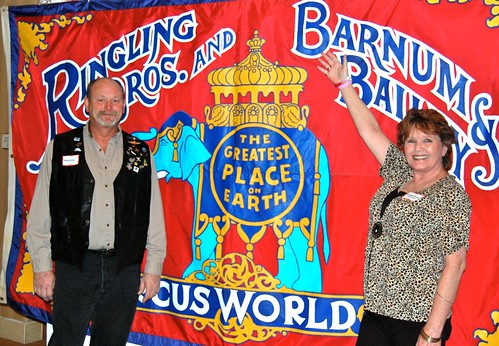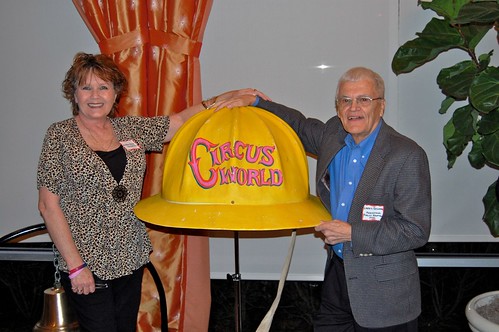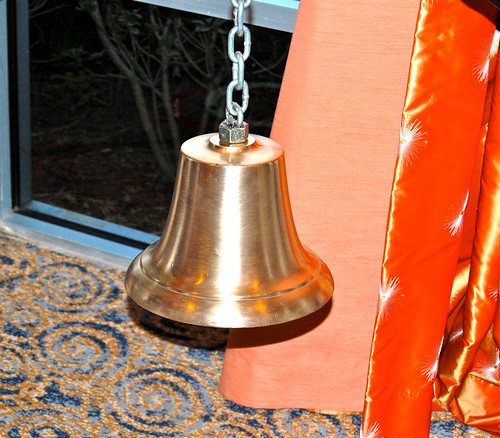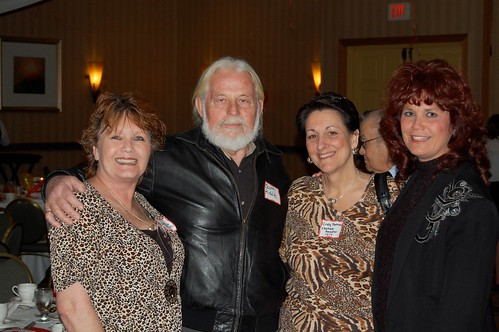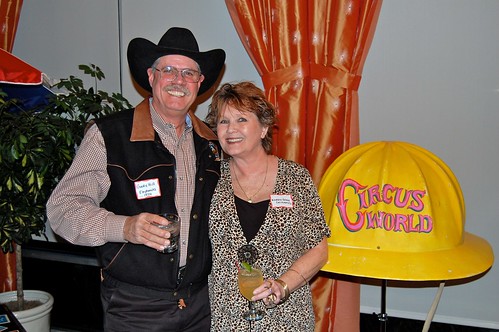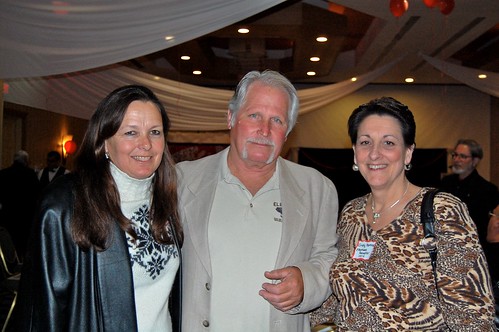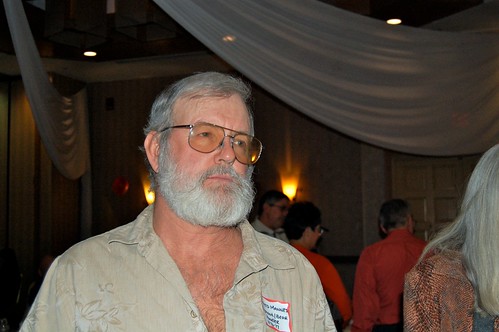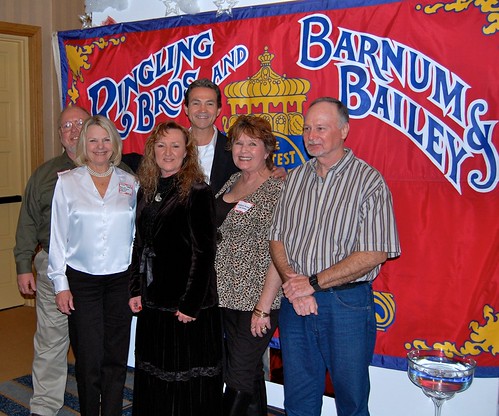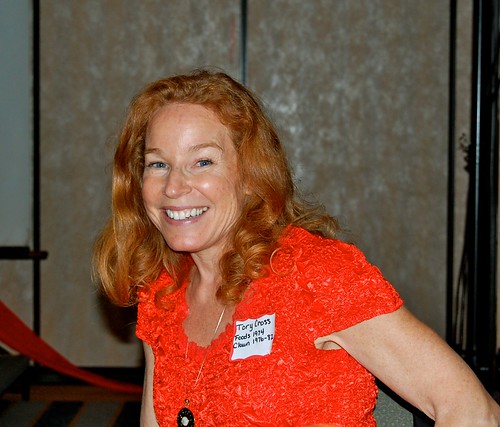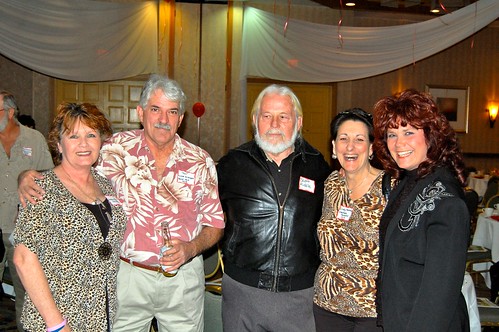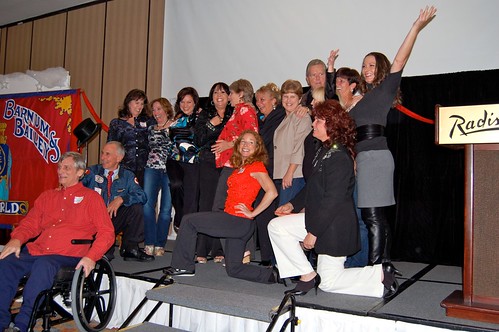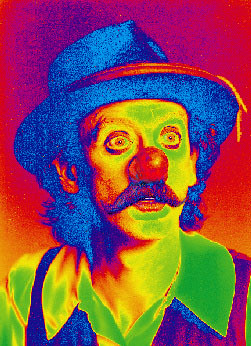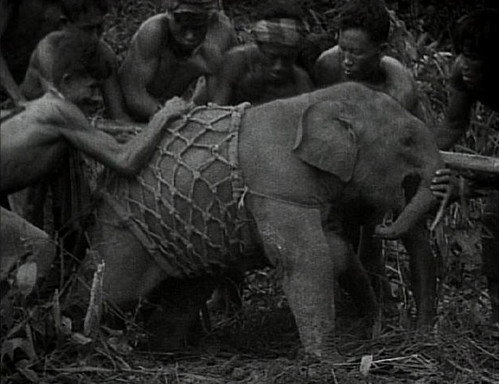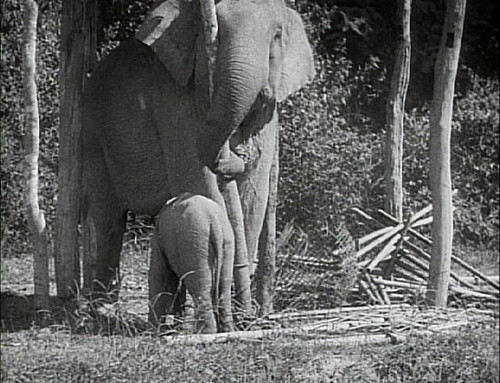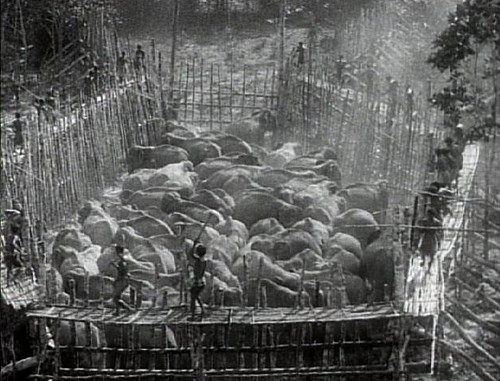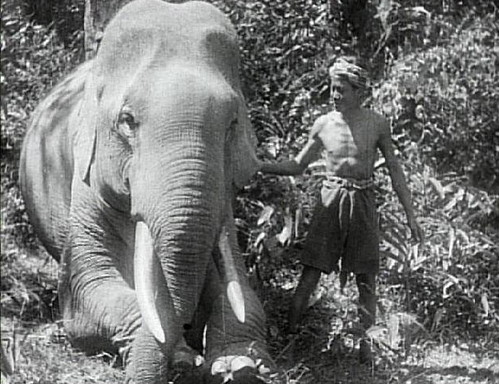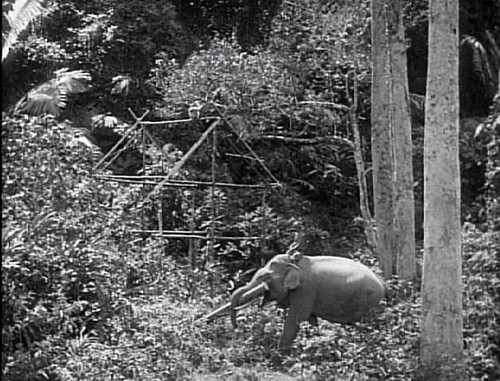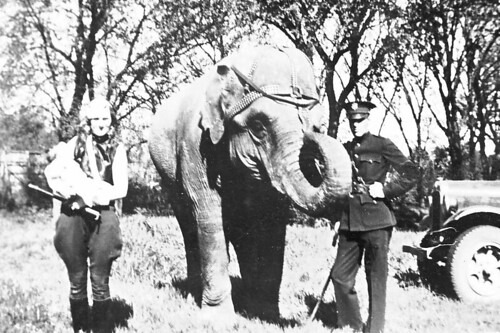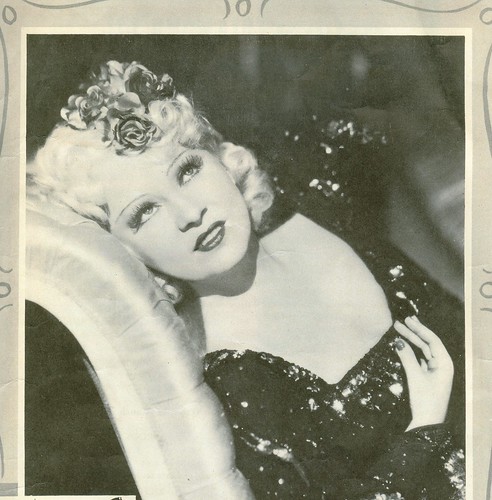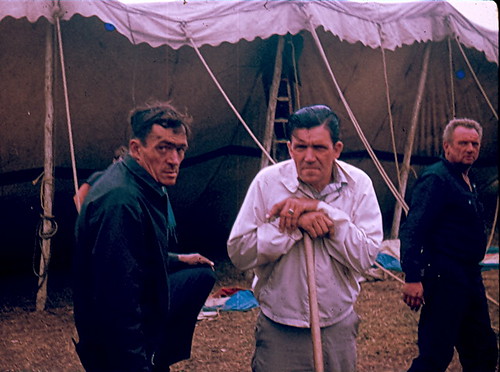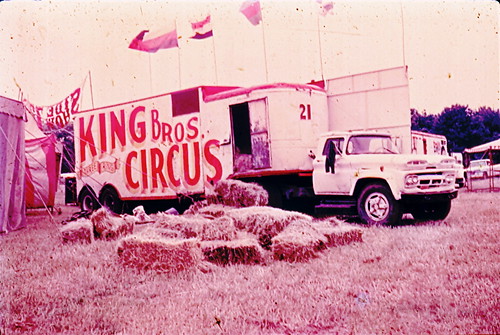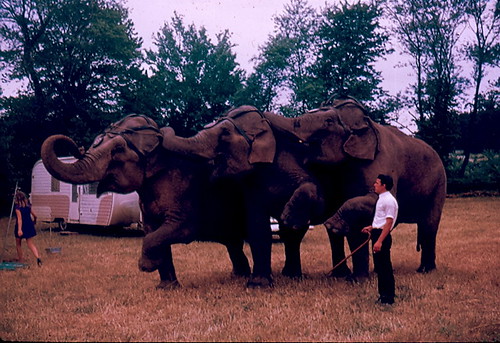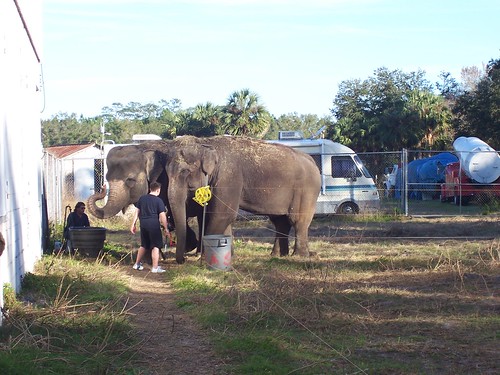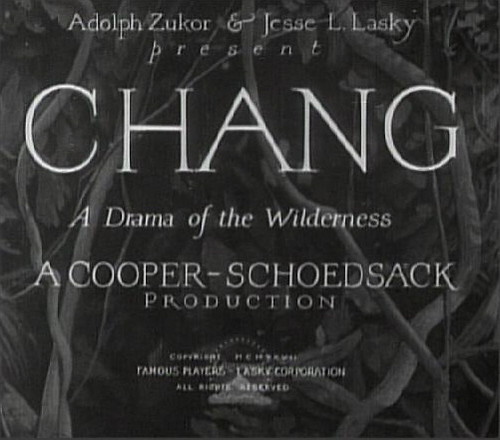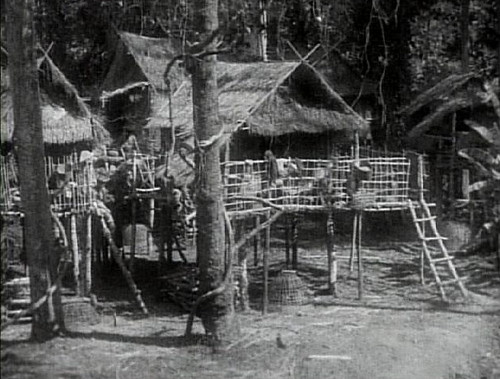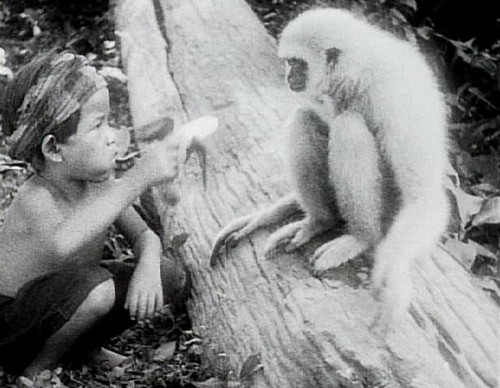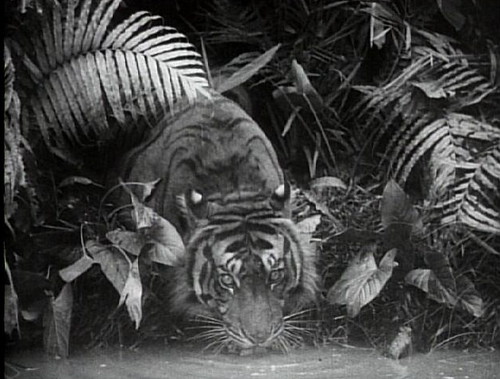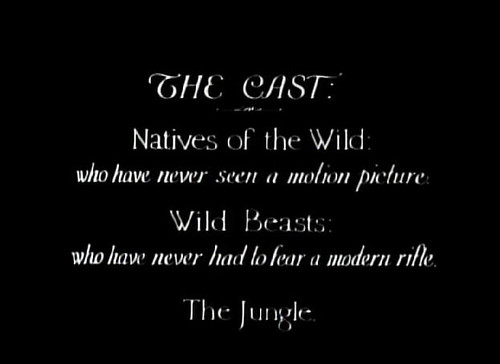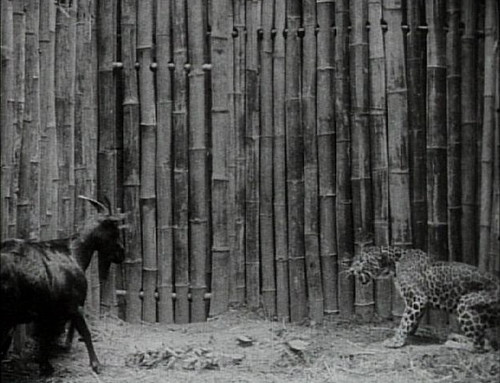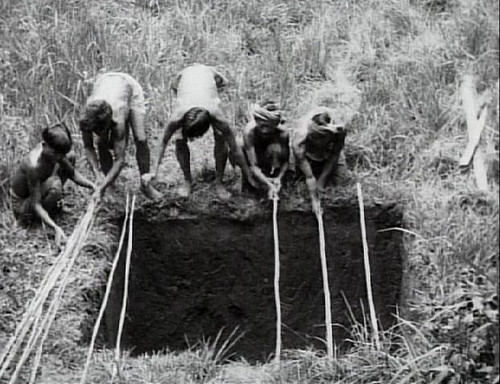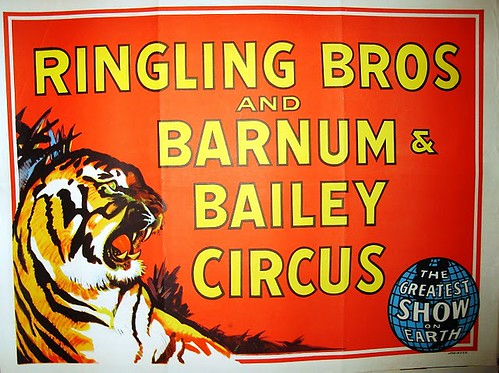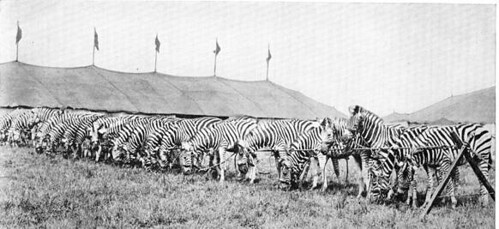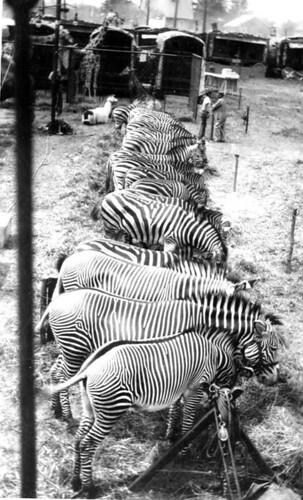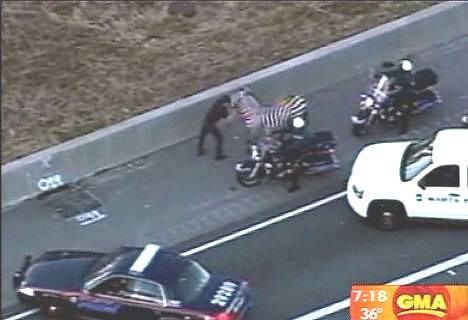For entertainment-starved frontier towns, the arrival of a traveling circus was a thrilling community event eagerly attended by almost everyone. Mary Chase Walker, one of San Diego’s first schoolteachers, described a Mexican circus that came soon after her arrival in the small town in July 1865: |
Sunday, February 28, 2010
From Don Covington
Posted by
Buckles
at
2/28/2010 10:43:00 PM
2
comments
![]()
CW Reunion #1 (From Karen Glenn)
Circus World Reunion Feb 2010 My Sweet husband, Billy and me...with the original banner from CW, totally restored and repainted just for the Reunion! Amazing..mad us all cry!! |
Posted by
Buckles
at
2/28/2010 06:14:00 AM
2
comments
![]()
CW Reunion #2
Circus World Reunion Feb 2010. One of the original hard hats that was worn by an elephant for the Ground Breaking of CW park way back in 1974...Thanks to the former Ben Williams, and former Billy Bouthilier for giving this hat to me back in the day...and a special thanks to my Hubby, BIlly for digging it out of the back of the storage bldg and cleaning it up for the show. |
Posted by
Buckles
at
2/28/2010 06:12:00 AM
3
comments
![]()
CW Reunion #3
Circus World Reunion Feb 2010. The original brass bell that came from the little circus train that performed either at Circus World or on the RBBB show that was at the park...somehow I ended up with it...someone gave it to me back in the 70's..wonder who?? THanks to Billy, my hubby for cleaning it and building a stand for it to show it at the reunion. |
Posted by
Buckles
at
2/28/2010 06:08:00 AM
0
comments
![]()
CW Reunion #4
Circus World Reunion Feb 2010 WOW!! Talk about some oldies from the Circus World days...Me, Scott Riddle, Cindy Potter and Cindy Herriott Wells...We all worked out there with elephants and horses, magic, etc... |
Posted by
Buckles
at
2/28/2010 06:06:00 AM
0
comments
![]()
CW Reunion #5
Circus World Reunion Feb 2010 Gary Hill former elephant man from Circus World, Great Adventures Park, NJ, and Texas, and from the RBBB show in the elephant and cats depts. and me... What a wonderful old friend...it was a terrific meeting and night with all the old gang! |
Posted by
Buckles
at
2/28/2010 06:04:00 AM
0
comments
![]()
CW Reunion #6
Circus World Reunion Feb 2010 Kathy and Gary Jacobson and Cindy Potter, what fun having all us together again!! |
Posted by
Buckles
at
2/28/2010 06:02:00 AM
2
comments
![]()
CW Reunion #7
Circus World Reunion Feb 2010. David Mannis from the elephant place in FL...still working with elephants amazing!! It was wonderful seeing these elephant guys from back in the 70's again! |
Posted by
Buckles
at
2/28/2010 06:00:00 AM
0
comments
![]()
CW Reunion #9
Circus World Reunion Feb 2010 The beautiful and talented Tory Cross!! Still as gorgeous and fun and sweet as ever!! |
Posted by
Buckles
at
2/28/2010 05:55:00 AM
2
comments
![]()
CW Reunion #10
Circus World Reunion Feb 2010...Again...the original 3 partners in crime from the CW days.... I love these ladies! |
Posted by
Buckles
at
2/28/2010 05:53:00 AM
4
comments
![]()
CW Reunion #11
Circus World Reunion Feb 2010 and again |
Posted by
Buckles
at
2/28/2010 05:51:00 AM
2
comments
![]()
CW Reunion #12
Circus World Reunion Feb 2010 You know the dancers always hogging the stage...lol...just like us elephant and magic show girls.. and guys. |
Posted by
Buckles
at
2/28/2010 05:49:00 AM
1 comments
![]()
From Bud Copeland
ULTRABUDAFOON |
Posted by
Buckles
at
2/28/2010 05:39:00 AM
3
comments
![]()
Saturday, February 27, 2010
Chang #10 (From Eric Beheim)
Even after the jungle is cleared of predatory cats, Kru’s rice patch is ruined by “chang” the jungle beast feared above all others. (“Chang” is the Laotian word for elephant.) |
Posted by
Buckles
at
2/27/2010 09:54:00 AM
1 comments
![]()
Chang #11
Hoping to eventually train the calf to become a work elephant, Kru ties it to one of the poles supporting his house. |
Posted by
Buckles
at
2/27/2010 09:53:00 AM
0
comments
![]()
Chang #12
When the mother elephant comes to rescue her calf, Kru and his family must flee to a nearby village. In her fury, the mother completely destroys their house. |
Posted by
Buckles
at
2/27/2010 09:52:00 AM
0
comments
![]()
Chang #13
No sooner does Kru and his family reach the village, when a herd of wild elephants comes crashing out of the jungle. (To film the charging herd from ground level, Schoedsack had a pit dug and covered with heavy logs. A low turret of logs was built in the center so that the camera could be placed above ground level. A herd of wild elephants was driven toward and over the covered pit, result in one of the film’s most spectacular scenes.) |
Posted by
Buckles
at
2/27/2010 09:51:00 AM
0
comments
![]()
Chang #14
The herd rampages through the village and destroys it completely. (During the film’s New York engagement, this sequence was projected in “Magnascope” with the screen opening from its normal size to full proscenium width. Concealed behind the screen were “thunder-drums” which were used to emphasize the tumult of the stampede.) |
Posted by
Buckles
at
2/27/2010 09:50:00 AM
1 comments
![]()
Chang #15
Led by Kru, the natives build a stockade and drive the elephant herd into it. |
Posted by
Buckles
at
2/27/2010 09:49:00 AM
0
comments
![]()
Chang #17
Likely candidates are then selected to be trained as work elephants. |
Posted by
Buckles
at
2/27/2010 09:47:00 AM
0
comments
![]()
Chang #18
As his share of the drive, Kru receives his own elephant. |
Posted by
Buckles
at
2/27/2010 09:46:00 AM
0
comments
![]()
Chang #19
The film ends with Kru using his elephant to rebuild his house. Produced for $60,000, CHANG was enormously successful and influenced such later films such as BRING ‘EM BACK ALIVE, TARZAN OF THE APES, and KING KONG. It is now available on DVD and can be requested through NETFLIX. |
Posted by
Buckles
at
2/27/2010 09:45:00 AM
3
comments
![]()
Another Glitch!
I have the concluding pictures from the Chang Movie ready to go but for some reason, part of left column is missing and I'll have to wait until Shannon arrives. to restore order. |
Posted by
Buckles
at
2/27/2010 06:18:00 AM
10
comments
![]()
Friday, February 26, 2010
From Paul Gutheil
AND A VERY HAPPY BIRTHDAY AND MANY MORE. |
Posted by
Buckles
at
2/26/2010 06:13:00 AM
1 comments
![]()
Beatty - Cole 1970 (From Jim Cole)
1970 Circus Season Part 2 |
Posted by
Buckles
at
2/26/2010 06:11:00 AM
4
comments
![]()
Fred Logan & Omi
Another circus infant. |
Posted by
Buckles
at
2/26/2010 06:09:00 AM
2
comments
![]()
King Bros elephant truck 1970. later destroyed in wreck
Posted by
Buckles
at
2/26/2010 06:08:00 AM
0
comments
![]()
King Bros. Band, 1970..no big top
Kennedy Swain in the center with Snooks Swain at the drums. |
Posted by
Buckles
at
2/26/2010 06:07:00 AM
2
comments
![]()
Paul Duke & King Bros Elephants, 1970
"Sidney", "Konti" and "Ola" |
Posted by
Buckles
at
2/26/2010 06:05:00 AM
2
comments
![]()
From Adam Hill #1
This is "Tina" and "Jewel" while under my care, as you can see they were well taken care of. |
Posted by
Buckles
at
2/26/2010 06:02:00 AM
2
comments
![]()
Thursday, February 25, 2010
Chang #1 (From Eric Beheim)
Following the commercial and artistic success of their 1925 feature-length documentary GRASS, filmmakers Merian C. Cooper and Ernest B. Schoedsack (who would later produce KING KONG) set about producing another “natural drama” CHANG. Its theme would be man’s conflict with the jungle. For their location, Cooper and Schoedsack selected the Laotian Province of Nan in Northeast Siam (now Thailand), said to be the most remote jungle in the world. (To get there, the filmmakers had to travel by horseback, on foot and by log canoe. The journey included sixty-seven river crossings.) |
Posted by
Buckles
at
2/25/2010 06:01:00 AM
0
comments
![]()
Chang #2
While on location, the production team lived in huts on stilts (to protect them from wild animals) and endured the same hardships and dangers as the natives. (Schoedsack suffered from malaria for most of the 14 months he was on location.) |
Posted by
Buckles
at
2/25/2010 06:00:00 AM
1 comments
![]()
Chang #3
Comic relief was provided by the family’s pet, a white gibbon ape. |
Posted by
Buckles
at
2/25/2010 05:59:00 AM
0
comments
![]()
Chang #4
No telephoto lenses were used, and the wild animal scenes were all filmed at close range. Schoedsack cranked the camera while Cooper stood close by with a rifle. |
Posted by
Buckles
at
2/25/2010 05:58:00 AM
2
comments
![]()
Chang #5
One of the opening title cards identifies the “cast” in this unique manner. |
Posted by
Buckles
at
2/25/2010 05:57:00 AM
0
comments
![]()
Chang #6
After his family’s goat is killed by a leopard and his water buffalo is killed by a tiger, tribesman Kru bands together with his neighbors to hunt down the tigers and leopards in their area. |
Posted by
Buckles
at
2/25/2010 05:54:00 AM
0
comments
![]()
Chang #7
In addition to snares, nets and deadfalls, deep pits are dug. |
Posted by
Buckles
at
2/25/2010 05:53:00 AM
1 comments
![]()
Chang #9
(To film the tiger from Kru’s point of view, Schoedsack placed his camera on a platform 15 feet up a tree. To elicit a response from the tiger, he gave it a “Bronx cheer.” While the camera was rolling, the tiger clawed its way up the tree to within inches of the lens.) |
Posted by
Buckles
at
2/25/2010 05:50:00 AM
2
comments
![]()
Wednesday, February 24, 2010
Federal Racketeering Lawsuit Stuns Humane Society
You may have missed our New Year’s Eve exposé covering the dismissal of a federal lawsuit pushed by a consortium of animal rights groups that included the deceptive Humane Society of the United States (HSUS). The groups alleged that Feld Entertainment (the parent company of the Ringling Bros. and Barnum & Bailey Circus) mistreated elephants in violation of the Endangered Species Act, but in December a judge tossed out the lawsuit. Now the plot thickens: The circus is suing HSUS, two HSUS lawyers, and a number of other animal rights organizations under the Racketeer Influenced and Corrupt Organizations (RICO) Act. (The lawsuit is exclusively available at HumaneWatch.org.) The original animal rights lawsuit, filed more than nine years ago, was based on information provided by a former Ringling elephant “barn helper” named Tom Rider. After Rider left his circus job, he was paid by animal rights groups to testify about the supposedly “bad” treatment of elephants there. In all, the original lawsuit’s plaintiffs paid Rider more than $190,000—his sole source of income for years—while the litigation made its way through the court system. Sound a bit like pay-for-play? As Judge Emmet Sullivan noted in his December ruling that dismissed the animal rights groups’ lawsuit: “The Court finds that Mr. Rider is essentially a paid plaintiff and fact witness who is not credible, and therefore affords no weight to his testimony…. [T]he primary purpose [for the payments] is to keep Mr. Rider involved with the litigation…” Based on Judge Sullivan’s finding, Feld is suing everyone who played a part in this collaborative scheme (hence the “racketeering” aspect). This includes Rider and a nonprofit “Wildlife Advocacy Project” charity that the Washington, DC law firm of Meyer Glitzenstein & Crystal allegedly used to launder money between their plaintiff clients and Rider. One of these clients putting up dough to support Rider was the Fund for Animals, which merged with HSUS in 2004. Feld is leveling bribery, fraud, obstruction of justice, and money laundering charges against HSUS and two of its corporate attorneys, three other animal rights groups, Meyer Glitzenstein & Crystal, and all three of that firm’s named partners. It’s an earth-shattering lawsuit. Today we’re telling the media:
You can read the full, 135-page lawsuit over at HumaneWatch. It’s worth more than a glance. If these allegations are proven true, HSUS employees might be finding themselves walking the same breadline they’ve tried to put so many others in. Feld is suing:
|
Posted by
Buckles
at
2/24/2010 09:05:00 PM
10
comments
![]()
Ringling Barnum TIGER TITLE (1942)
From Chris Berry |
Posted by
Buckles
at
2/24/2010 05:56:00 AM
1 comments
![]()
Zebras #1 (From Richard Reynolds)
Here is a fine view of one of RBBB's great zebra herds around 1930. John Ringling had an affinity for them and in 1927 imported a herd of 20 to go with six or so already on hand. Breeding was successful and the herd grew over the years. |
Posted by
Buckles
at
2/24/2010 05:52:00 AM
0
comments
![]()
Zebras #2
|
Posted by
Buckles
at
2/24/2010 05:50:00 AM
2
comments
![]()
Zebras #3
|
Posted by
Buckles
at
2/24/2010 05:48:00 AM
4
comments
![]()






